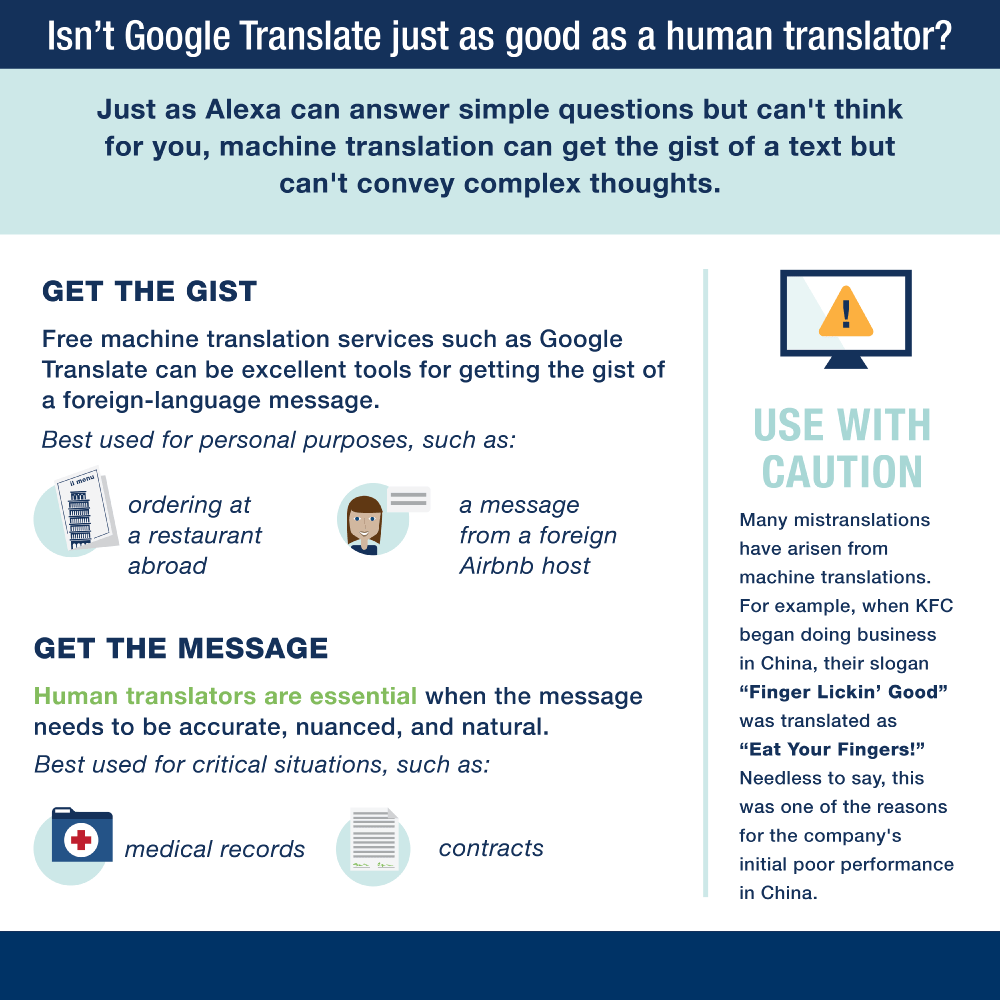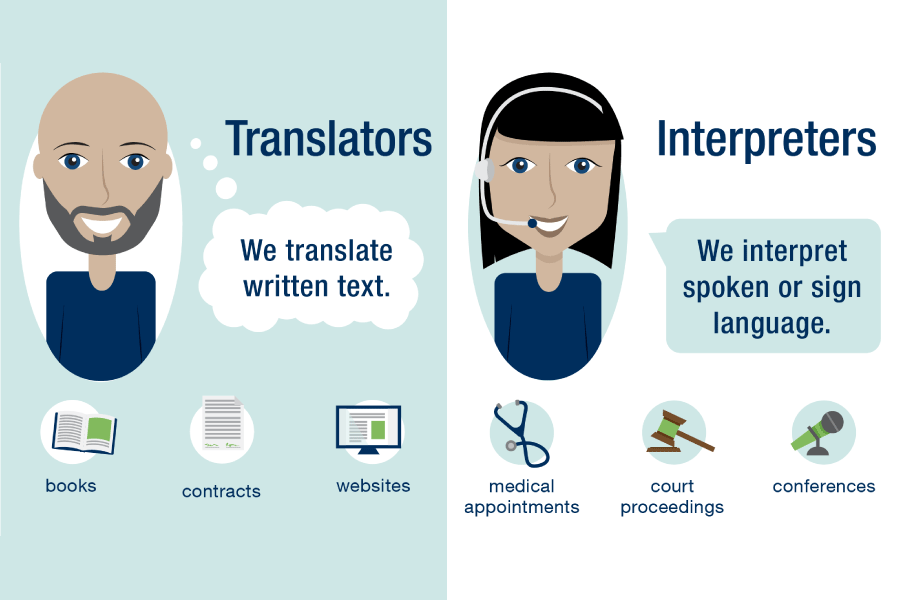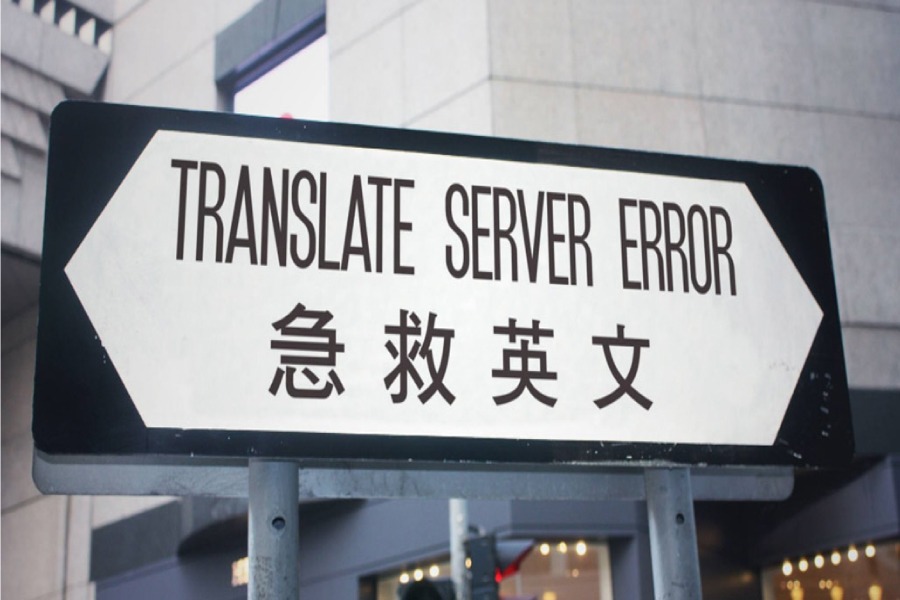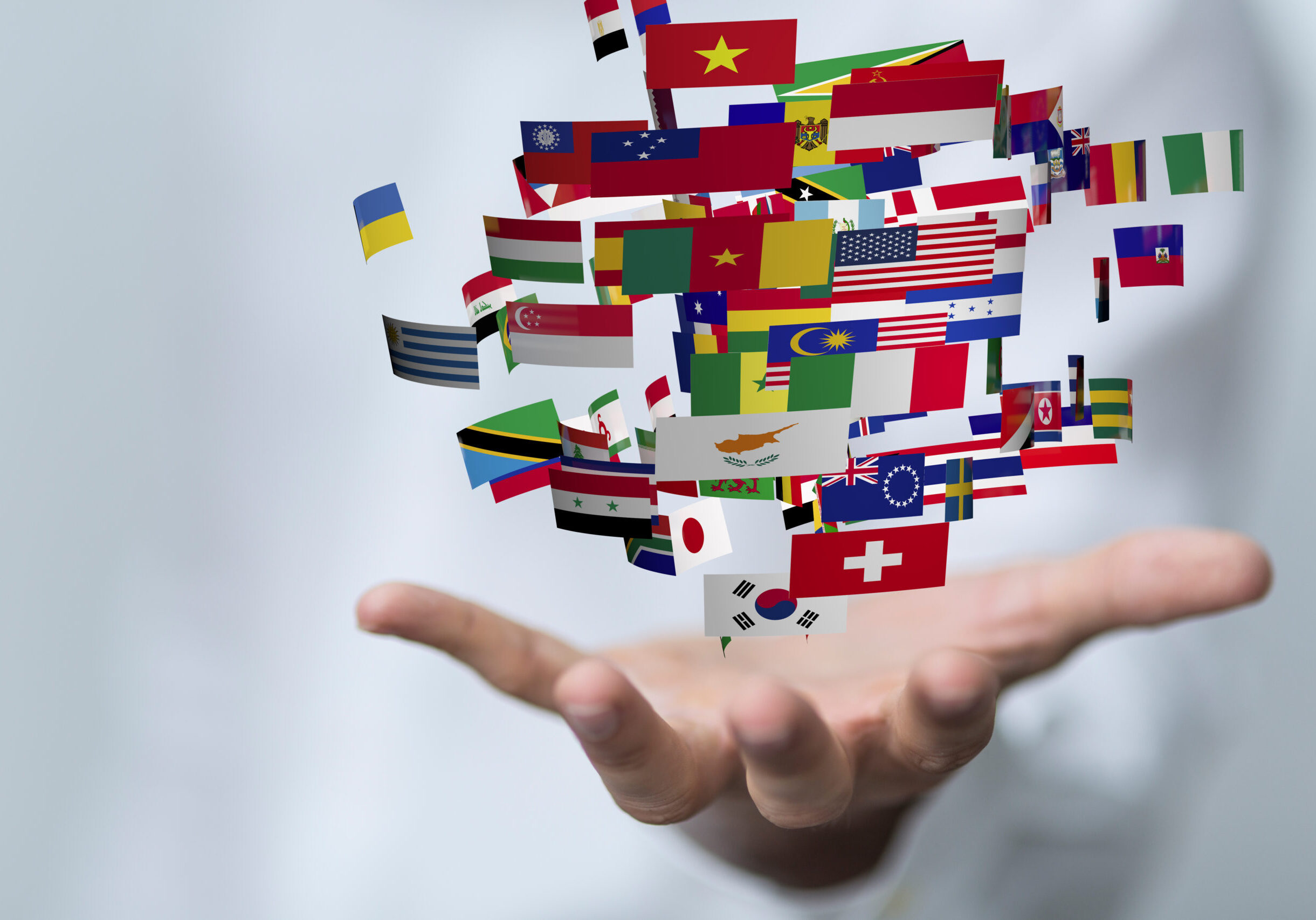What is machine translation?
Machine translation (MT) is the use of automated software that translates text without human involvement. Adaptive MT is a technology that learns and adjusts in real-time from human feedback.
MT is based on probability—not meaning. It doesn’t understand the meaning or the context of what it’s translating. MT guesses the most likely translation so, if you cannot read both languages, you will never know if it guessed correctly.
MT may produce fluent results, but fluency is not accuracy. Just because it looks right doesn't mean it is right.
While machine translation may save time and money, human translators are essential when the message needs to be accurate.
When to use machine translation
Generic MT services such as Google Translate, DeepL, or Microsoft Bing Translator can be excellent tools for gaining an approximate idea of what a foreign-language communication says.
For the casual user, "getting the gist" of the message may be helpful for ordering at a restaurant abroad or receiving messages from a foreign Airbnb host.
Customizable MT services can be trained to improve accuracy of terminology within a specific field such as medical, legal, finance, etc.
The output can be more reliable, especially if the original texts were prepped with relatively short sentences or very controlled terminology. However, post-editing by a professional translator will be required, unless errors and non-idiomatic style can be tolerated.
Caution: It may not be confidential
Content that is translated by free online MT services may be stored and analyzed to improve their results. If you are considering using an MT service, review the terms and conditions to ensure your data remains confidential.

When NOT to use machine translation
If the law, a life, or your bottom line is involved, relying on MT can have disastrous consequences.
The choice between MT and human translation depends on the kind of text you need translated and how important accuracy is to you, your company, and your customers.
With the right process in place, functional texts in common language combinations will yield adequate results by using a combination of MT and human post-editing.
Creative texts should be translated by a human. MT will not be able to render style, nuance, or idiomatic expressions.
Poor translation can be embarrassing or even disastrous for your business—endangering customers and putting your company at risk for lawsuits.
To explore this topic further, read ATA's Position Paper on Machine Translation: A Clear Approach to a Complex Topic.
More Client Resources
What's the difference?
Translators do the writing. Interpreters do the talking. ATA helps you find the right language professional.
The ATA Compass
Our outreach publication provides up-to-date information and resources about the translating and interpreting industry.
Can I afford to hire a professional?
You can’t afford NOT to. Poor translation and interpreting services can be disastrous for your business. See what’s at stake.
Buying Language Services
ATA has developed buying guides to help you navigate the process of hiring and working with a language professional. Download these free guides.
Guide to agreements and contracts
ATA provides guidance for standard terms, conditions, and clauses. Adaptable samples of agreements and contracts are available.
Need a certified translation?
In the U.S. anyone can certify a translation. A translator does not need to be certified in order to provide a certified translation.





